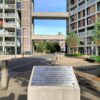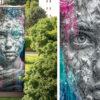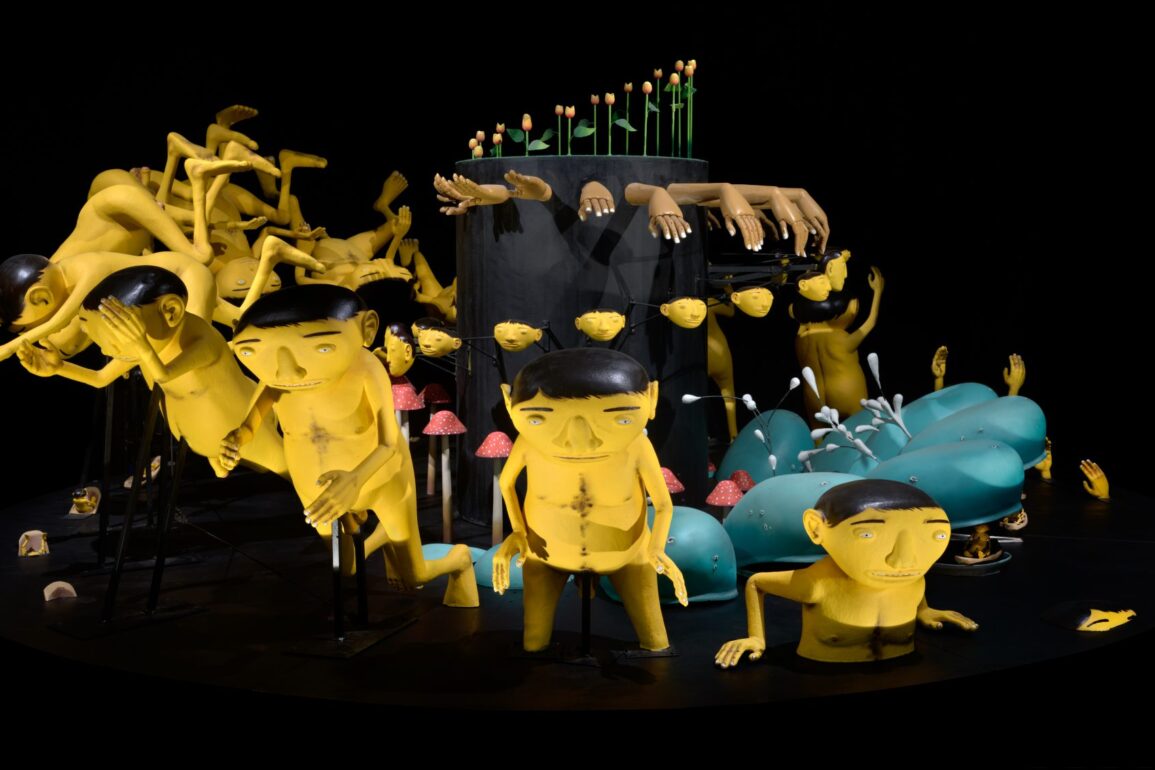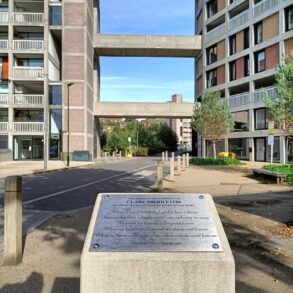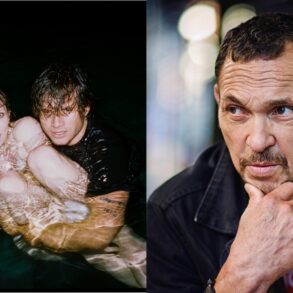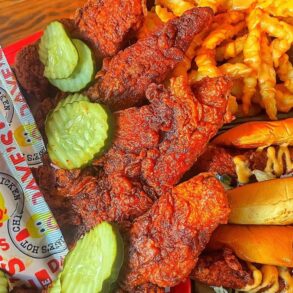
Installation view of Osgemeos, “Untitled (92 Speakers),” 2019, “Gramophone,” 2016, and “1983—The Boombox,” 2017 in “Osgemeos: Endless Story,” 2024, at Hirshhorn Museum/Photo: Rick Coulby
“We’re born together, with the same dreams,” one of the twin brothers of the artistic duo Osgemeos describes in a promotional video for their exhibit “Endless Story,” opening on September 29 at the Hirshhorn Museum in Washington, D.C. Shown for almost a year, until August 3, 2025, the exhibition is an impressively expansive collection of their work up to date. Curated by Marina Isgro, with the assistance of CJ Greenhill Caldera, the show includes over 1,000 drawings, sculptures, sketches and archival material to define and encompass their practice so far.
Drawing is a mode of conversation for the twins Gustavo and Otavio Pandolfo (b. São Paulo, Brazil, 1974) and through this drawing conversation, they arrive at a meeting point. “Os gemeos” means “the twins” in Portuguese. It’s hard to distinguish which brother draws what, their art is a symbol of their unity and twinness. Included in the exhibition is even one of their first collaborative drawings made in the 1980s, for instance, a pencil and marker drawing of Japanese television superhero Ultraman fighting monsters, reminiscent of teenage sketches in school notebooks. Another one from their youth, made in the 1990s, is of a surrealist psychedelic landscape showcasing the mastery of shape and color of the art made in their twenties. Seeing the beginnings of their practice as two artists finding their way in the world as artists is seeing a youthful spirit that continues to this day in the vibrancy of street art—first found in teenage rebellion and continued in the colorful imagery they paint today.
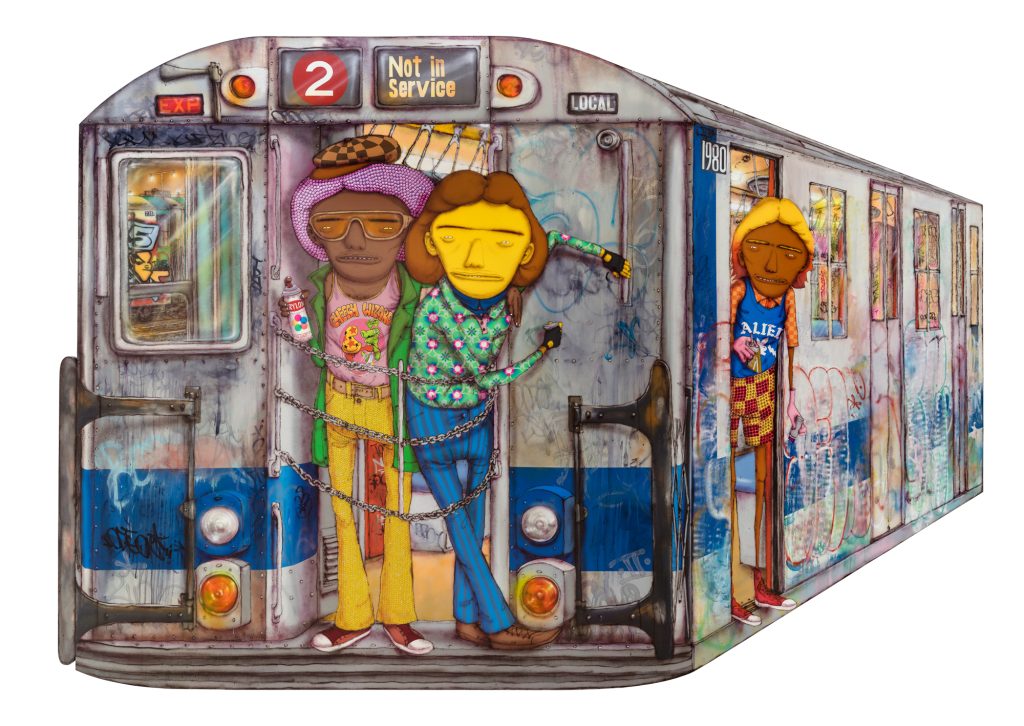
Osgemeos, “1980,” 2020, mixed media with sequins on MDF, 86 1/4″ × 125 9/16″ × 2″/Photo: Filipe Berndt
In 2012, Osgemeos painted a seventy-foot-by-seventy-foot public mural in Boston, which depicted a figure adorned with colorful patterned clothing seemingly stuck in the wall, his arms and legs wrapped inside the borders of the large wall. The figure, with its face wrapped in a red shirt, received controversial reactions, however, and was wrongly associated with terrorism and anti-Muslim rhetoric, although that was not the brothers’ intention. Though their message is to spread joy through colorful shapes and characters, they’ve been subjected to censorship. Graffiti is often illegal or not seen on the same level as fine art, but the twin duo is able to evoke plenty with their work. Their canvas paintings are portraits of Brazil’s diverse population as well as eloquent representations of diverse subcultures: roller-blading friends with boomboxes (such as in “Mr. Popping and Boogaloo Donut,” 2012), eclectic friends dancing in a landscape (“O dia da festa de break (The Breakdancing Party’s Day),” 2016), groups of friends on trains and even portraits of street artists holding cans of spray paint.
I was reminded of when a curator wrote about artist Jeffrey Gibson’s work that “his use of pattern and abstract geometries confronts the chromophobia of contemporary art,” as was explained in the wall text. Osgemeos are unafraid to use every color at their disposal, portraying electric characters basking in a sea of rainbow patterns. It also feels parallel to the way they view music. Though paintings are silent, their work alludes to this electric feeling found in hip-hop, electronica, Brazilian dance and more. “When we went to the streets, we fell in love with hip-hop,” explains one of the brothers.
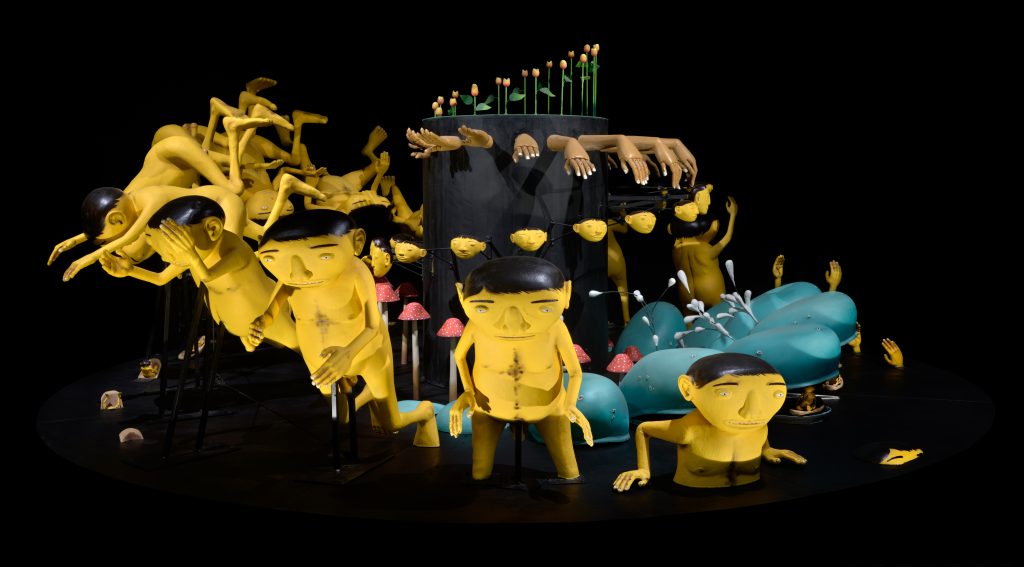
Osgemeos, “Untitled (Zoetrope),” 2014, installed at the Hirshhorn Museum, mixed media, 200 13/16″ x 236 1/4″ x 196 7/8″/Photo: Rick Coulby
One of the most impressive works is a sculpture they call “zoetrope.” While a photographic zoetrope is normally a series of images that, when spun around, give the illusion of a moving image or mini film, this sculpture is a three-dimensional moving image of one of their signature yellow characters diving into the water so you can move around it yourself and imagine the character diving into a pool. It felt to me like the perfect metaphor for their work—a charming collection of portraits of Brazil’s diversity and unity. At the Hirshhorn Museum, the twin duo transports us into their world of music, color and peace.
“Osgemeos: Endless Story” is on view at Hirshhorn Museum, Independence Avenue and 7th Street, Washington, D.C., through August 3, 2025.
This post was originally published on this site be sure to check out more of their content.

